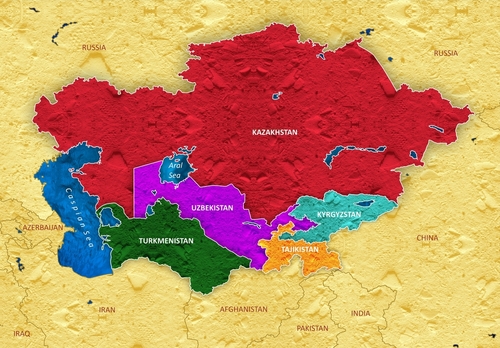Belgium (Brussels Morning Newspaper), We live in an interconnected world where even Europe cannot manage without goods imports from abroad. However, importing goods from some countries, particularly distant ones, has become much more complicated in recent years. The first major inconvenience was caused by the conflict in Ukraine, which fairly quickly forced Europe to diversify its gas and oil imports. It became impossible to rely on imports of strategic raw materials from Russia for several reasons including security.
Disruption of an important maritime route
However, Russia’s aggression is not the only problem. The situation got significantly complicated by the current developments in Yemen, where an important shipping route through the Suez Canal has been disrupted because of the Houthis. The shipping route has therefore had to be diverted via the Cape of Good Hope, making distribution significantly longer and goods more expensive. The route around South Africa’s Cape of Good Hope adds approximately 6,000 additional nautical miles and an estimated $1 million in additional fuel costs per vessel for the journey between Asia and Northern Europe. The average time for sea shipments between East Asia and Europe is normally 30-45 days, however, the detour around Africa adds another 10-13 days.
Of course, no other route can compare to the Suez Canal through which more than one billion tonnes of cargo passes each year. In the past, hundreds of cargo ships usually passed through the Suez Canal every month. However, given the current security situation, this route has become extremely dangerous and is being abandoned. The German Kiel Institute for the World Economy reported that the number of containers transported in the Red Sea in December (2023) had fallen drastically by more than half.
An even more radical conclusion was reached by the findings of Alphaliner, a company that collects shipping data. Its data shows that while in the week of 26 November (the 48th week of 2023) around 66% of container ships were passing through the Suez Canal, 21% were passing through the Panama Canal and only 13% were passing the Cape of Good Hope, at the turn of last year the situation was very different. After several weeks of vessel diversions due to the situation in Yemen, in the week of 31 December (1st week of 2024) approximately 85% of vessels passed the Cape of Good Hope, while only 12% passed the Panama Canal and only 3% (!) passed the Suez Canal.
The promising central corridor
Given that nearly two years of Russian military aggression in Ukraine have passed and considering the situation in the Red Sea, it is not surprising that more and more countries are realising that dependence on a single source or a route of supply poses a direct risk to their national security. Diversification of sources and supply routes is therefore becoming an absolute priority.
This is where the Central Asian region comes into the picture. The phenomenon of Central Asia as an important transport route is nothing new. Its geographical location at the center of the Eurasian continent defines the region. It is no coincidence that in ancient times the so-called Silk Road passed through Central Asia, linking China with the Mediterranean region and, by extension, the whole of the then-civilised part of Europe. The Central Asian region was therefore the link between the Far East and Europe until the age of overseas voyages.
Even in today’s very uncertain times, it can play a very important positive role as an important transport artery. The so-called Central Corridor through Kazakhstan, which is now under construction, opens up new opportunities for the whole of Europe. It can solve, at least to a small extent, the problems of transport from the Far East. The Central Corridor is a network of roads, railways, and ships that connects Europe with Asia via the Caucasus and Central Asia and across the Caspian and Black Seas. It is compiled of several different transport projects carried out over the last quarter of a century.
The speed of transport across Central Asia to the Caucasus has increased incredibly in recent years. A few years ago, such a journey could take 50 days or more, but now the distance can be covered in much less time. This year, on 11 January, a train from the Chinese city of Xi’an arrived in Azerbaijan, taking only a fraction of the original time. The approximately 3,200-km journey across Kazakhstan and the Caspian Sea was completed in 11 days.
Until recently, trade between East and West via the Central Corridor was of rather negligible importance. But everything began to change two years ago when Russia first invaded Ukraine. Due to geopolitical change caused by the aggression the potential of the Central Corridor has expanded considerably. According to the Astana Times last December, the volume of goods transported through the Central Corridor in the first nine months of 2023 reached 2 million tonnes, compared with just 1.1 million tonnes in the same period in 2022.
Kazakhstan’s Caspian ports are experiencing a huge increase in cargo traffic. While in 2021 the Kazakh ports of Aktau and Kuryk handled less than 1 million tonnes of goods, in December 2023, in the words of Kazakh Transport Minister Marat Karabayev, it was 2.5 million tonnes. The total capacity of the two ports is approximately 21 million tonnes per year. On the other side of the Caspian Sea in Azerbaijan, the new port of Alat near Baku is already capable of handling around 15 million tonnes of cargo and aims to increase this capacity to 25 million tonnes.
The road then continues further west. Railways, such as the Baku-Tbilisi-Kars route, connect Azerbaijan via Georgia to Turkey and then Europe. Another possible route to Europe is offered by the Georgian ports of Batumi and Poti, which have been upgraded and expanded to carry ships across the Black Sea to ports in Romania and Bulgaria.
It is planned to achieve an increase in the volume of cargo passing through the Central Corridor to 11 million tonnes per year by 2030. Meeting this target will require significant investment and assistance with logistics. Looking at the current situation, where Russian routes are taboo and maritime trade is restricted by hostilities in the Middle East, there can be no doubt about the need to diversify trade routes. It is essential to be forward looking, expand and increase the efficiency of the Central Corridor. As transport times expand and shorten, it means one thing for Europe: the Central Corridor can provide a reliable route for transporting larger cargoes of goods from East Asia to the heart of Europe in less than one month. The alternative to trade with Russia and the search for new routes have become a necessity for Europe. And the Central Corridor has huge potential to become one of these routes.
Entire Europe can benefit
The transport route through Central Asia will be of considerable importance for Kazakhstan and Europe. On the one hand, Kazakhstan can thereby strengthen its position as a transit country between Asia and Europe thanks to the Trans-Caspian International Transport Route, through which cargo bypasses Russia. On the other hand, we in Europe can also benefit, because the route opens up further opportunities for importing goods. Moreover, Kazakhstan has enormous mineral wealth, which represents a further opportunity to strengthen mutual trade.
The capacity of this route cannot, of course, be compared with, for example, the sea route through the Suez Canal, but there is no doubt that the route through Central Asia represents one of the much-needed alternatives for the transport of goods. There can therefore be no dispute about the importance of deepening Europe’s relations with the region.
Opinions expressed in the op-ed section are solely those of the individual author and do not represent the official stance of our newspaper. We believe in providing a platform for a wide range of voices and perspectives, even those that may challenge or differ from our own. As always, we remain committed to providing our readers with high-quality, fair, and balanced journalism. Thank you for your continued support.Sincerely, The Brussels Morning Team



